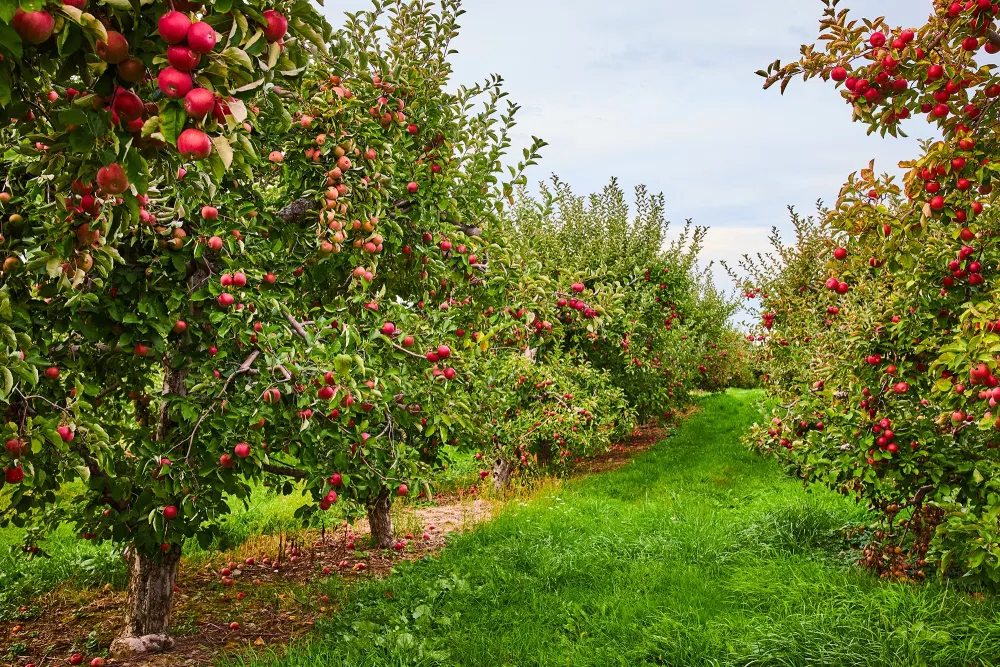The Arbor Day Foundation is pledging 10 million trees to areas impacted by hurricanes Helene, Milton Help us replant
Bulletin
How to Start an Urban Orchard
Trees for food adds a whole new dimension to urban forestry — and is one more way that trees can benefit the residents of our communities.

With the right partnerships, a little planning and a lot of education, fruit and nut trees can make a huge contribution to the tradition of service already provided by our green canopies.
Trees play a lot of roles in a community. While providing their more traditional services of shade, beauty, stormwater control and energy savings, trees can be selected that also provide a crop of fresh fruit or nuts on public rights-of-way, portions of school grounds, and in parks. On private land, urban orchards can be planted on unused lots and church grounds. And, of course, there are residents’ yards where a pear tree may work as well in the landscape as a maple or linden. The potential, in most climate areas of North America, is almost unlimited.
The Alliance for Community Trees network has been a leader in promoting and developing guidelines for the use of food trees. Much of the material in this bulletin is the result of their pioneering work. The concept has been to “bring back one of the oldest uses of trees,” according to former Executive Director Carrie Gallagher. “Fruit and nut trees have supported human nutrition for thousands of years. In recent decades, as the population has urbanized, people have lost touch with their food sources — even the ones that can grow right in their front yards.” She summarized what we have adapted as the theme for this bulletin:
The pleasure of picking a ripe pear, plum, or persimmon from a tree in a yard or neighborhood garden is not just a sweet seasonal joy. It also offers fresh and nutritious food to communities that may lack ready access to quality produce. It educates people about food sources and growing cycles, and about basic tree biology and agriculture. It brings neighbors together to dig and plant and prune and harvest, and to enjoy the delicious bounty of their trees. And it engages residents to alter their landscape, turning vacant lots and derelict spaces into beneficial gardens that can help turn a neighborhood around.
If your community does not include food trees in its urban forestry program, the following pages can serve as a guide to getting started. Whether it is a new initiative of the tree board or helping out another organization, the possibilities range from full-scale orchards to simply encouraging homeowners to plant a food tree.
As incongruous as it may seem at first, restoring one of the earliest uses of trees to our urban landscapes holds the potential of improving human health, fostering greater social interaction, and adding one more benefit to the long list of those resulting from continuous, systematic urban forestry.
In This Bulletin
Here’s what’s inside:
- Basic Essentials – Partners and Education – considering resources and educational opportunities
- Planning Your Project – key considerations to help you plan
- An Abundance of Success Stories – examples of urban orchards at work in their communities
- Roundin’ Up the Strays – successfully utilizing fruit and nut trees across your community

